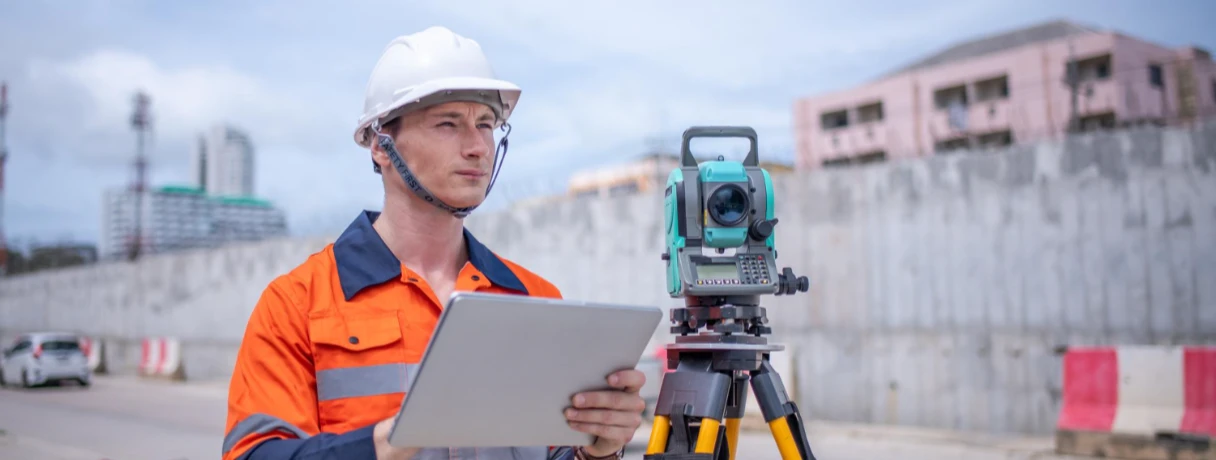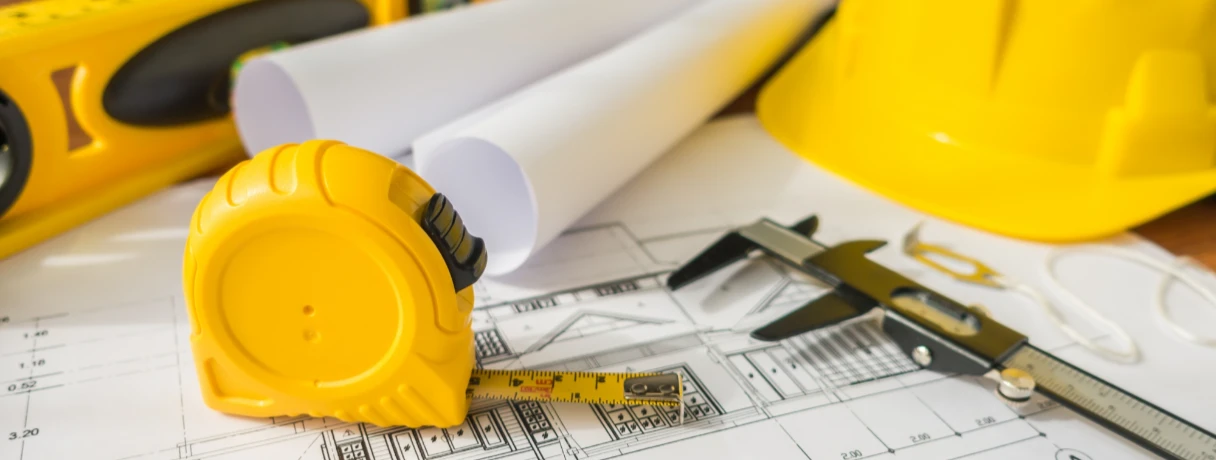Summary:
Estimators and general contractors can outsmart the 2026 MEP labor shortage by adopting BIM/VDC technologies, prefabrication, and AI-based takeoff tools, while investing in skilled team development and proactive risk planning to boost efficiency and project delivery. Let’s dive deeper into it:
Understanding the 2026 MEP Labor Shortage and Its Ripple Effect on Estimators
The 2026 MEP labor shortage will impact estimators by slowing down design and planning, creating delays that ripple across projects. Estimator bottlenecks amplify existing field constraints - when takeoffs or bids lag, procurement and scheduling delays cascade downstream. Need to adapt with digital workflows, BIM, and prefabrication to stay on schedule and reduce risk.
What Does the MEP Labor Shortage Really Mean for the Construction Industry?
The MEP (Mechanical, Electrical, Plumbing) labor shortage refers to a persistent gap between demand for skilled trades-installers, designers, estimators-and the available workforce. As veterans retire and fewer young entrants join, MEP-intensive projects are delayed, costs inflate, and quality risks rise.
Which Roles Are Most Affected by the MEP Labor Shortage?
The roles most affected by MEP labor shortage are:
- Field trades: electricians, pipefitters, HVAC technicians
- MEP detailers and designers
- MEP estimators and modelers
- BIM coordination roles
- Prefabrication technicians
Since estimation and design depend heavily on field work, labor shortages can create delays that ripple back through the entire planning process.
The Scale of the Problem- Key Statistics and Projections
- In the broader skilled trades, only 2 workers enter for every 5 who retire, a pattern hitting MEP hardest.
- Over 40% of skilled tradespeople in MEP roles may retire within the next decade.
- The U.S. construction sector needs ~454,000 new workers annually just to keep up with demand.
- Many engineering roles are going unfilled: 85% of open engineering jobs in recent reports cannot be filled by new graduates.
How Labor Gaps Disrupt MEP Estimating, Bidding, and Project Timelines
Labor gaps disrupt MEP estimating and project timelines by causing:
- Take-off delays: fewer personnel to process drawings
- Higher error rate: less oversight and rushed work
- Contingency inflation: estimators pad bids heavily to hedge labor shortfalls
- Clash rework: missing coordination leads to field rework and change orders
- Timeline slippage: labor constraints slow project delivery, undermining credibility
This creates a cycle where conservative bids, missed deadlines, and rework hurt both credibility and profitability.
Technology as the Equalizer- Turning MEP Labor Shortage into an Estimating Advantage
Technology can level the playing field amid the 2026 MEP labor shortage. By leveraging BIM, AI-based takeoff tools, prefabrication, and automated workflows, estimators and contractors can maintain accuracy, speed up bids, and turn labor constraints into a competitive advantage.
We know that by 2026, the MEP labor shortage is going to hit the construction industry hard. Estimating teams are already stretched thin, and most of their time still disappears into manual takeoffs-tracing lines, counting fixtures, double-checking plans. It’s slow, repetitive, and exhausting. That’s exactly where AI-based takeoffs step in. They cut out up to 90% of the estimator's manual effort, turning what used to take days into just a few hours. As a result, faster bids, fewer errors, and more time for the team to focus on strategy instead of spreadsheets- all become achievable for the GC’s team.
For GCs, this isn’t just about speed-it’s about staying ahead. AI takeoffs make their existing team dramatically more productive without adding extra hires. They can take on more bids, hit tighter deadlines, and keep their estimators focused on higher-value work. While others scramble to find skilled labor, the contractors adopting AI today are already boosting capacity and winning more work. The labor shortage isn’t coming-it’s already creeping in. The question stays: will your team be ready, or still stuck doing takeoffs the old way?
a. Integrating BIM and VDC to Improve Accuracy and Coordination
BIM (Building Information Modeling) and VDC (Virtual Design & Construction) are methods to create integrated 3D or multi-dimensional digital representations of building systems and workflows. Beam AI works with BIM-derived drawings (in 2D PDF format planset) to speed up quantity takeoffs and keep estimates accurate with QA-verified outputs.
Applications for estimators:
- Automated quantity extraction (duct, conduit, pipe lengths, fittings)
- Models that adjust totals as designs evolve
- Clash detection to avoid rework and improve coordination
According to research, integrating BIM into prefabricated MEP modular systems significantly reduces on-site labor and coordination time. BIM also supports digital prefabrication and construction, improving accuracy, reducing waste, and accelerating delivery.
b. Automation Tools that Streamline Takeoffs, Costing, and Clash Detection
Estimators can adopt AI-based takeoff software, rule-based cost engines, and clash detection modules. These reduce manual workloads and improve consistency. Such tools can flag missing equipment, piping conflicts, or redundant paths before a bid is finalized.
c. Cloud-Based Collaboration Between Estimators, Engineers, and GCs
A cloud-based common data environment (CDE) allows real-time updates from design, coordination, estimation, and fabrication teams. With versioning and access controls, every stakeholder sees the latest model and cost estimate. It reduces misalignment and accelerates decision cycles for GCs.
How Should GCs in the Current Market Scenario Prepare for the MEP Labor Shortage?
GCs can tackle the 2026 MEP labor shortage by taking a technology-driven approach, starting with BIM/VDC workflows and AI-based takeoff tools to streamline estimating and save time. To strengthen efficiency and coordination further:
- Invest in digital collaboration platforms to improve communication and reduce errors.
- Partner with prefabricators and off-site shops to shift labor-intensive work offsite.
- Promote integrator roles that connect estimating, design, and field execution.
- Foster teamwork and continuous improvement to maintain accuracy, speed, and project reliability despite labor constraints.
AI-Based Takeoffs: Expanding Estimating Capacity Without Expanding Headcount
As MEP estimators face tighter deadlines and fewer hands, automation has become the most reliable way to scale output without hiring surges. AI-based takeoff tools like Beam AI can read MEP drawings, extract quantities for ductwork, piping, fixtures, and electrical systems, and generate complete takeoff reports in hours, not days.
How this helps amid a labor shortage:
- Multiplies estimator capacity: Each estimator can now handle 3–5× more bids per week.
- Reduces training dependency: Senior estimators can focus on review and pricing instead of manual tracing.
- Enables faster collaboration: QA-reviewed outputs in Excel integrate easily your existing estimating workflow for immediate cost modeling.
- Improves accuracy and morale: Fewer repetitive tasks mean fewer mistakes and less burnout.
AI doesn’t replace estimators, it expands their impact. By combining estimator expertise with machine speed and QA verification, teams can absorb labor volatility while maintaining bid throughput and accuracy.
Optimizing Estimation Workflows to Reduce On-Site Labor Dependencies
Optimizing estimation workflows lets contractors reduce reliance on on-site labor by streamlining planning, improving accuracy, and accelerating project delivery.
a. Using Data Analytics to Forecast Material and Labor Trends
Tap into historical project databases: track labor productivity curves, unit costs, overtime premiums, and regional wage inflation. Use that to build predictive labor models. When markets shift, you can flag and update risk allowances proactively.
b. Prefabrication and Modular Construction- Estimating for Off-Site Efficiency
Prefabrication doesn’t eliminate labor needs; it redistributes them to controlled factory environments, where productivity and predictability are higher.
Benefits include schedule certainty, quality control, safer environments, waste reduction, and labor savings. Estimators must model: factory labor, transport, staging, buffer time, tolerances, and integration risk. That means having line items for kit assembly, shipping, on-site integration, and contingency for misfits.
c. Strengthening Risk Assessment and Contingency Planning in Bids
Given labor uncertainties, vital steps include:
- Scenario analysis (best / base / worst)
- Explicit risk allowances tied to labor
- Escalation clauses for labor cost rise
- Labor shortage addenda or assumptions clearly stated
- Backup supplier/fabricator options
A strong bid doesn’t ignore risk-it recognizes it and includes it in the budget.
How Should the Current Batch of MEP Estimators Prepare Themselves for the Labor Shortage?
MEP estimators can stay ahead of the 2026 labor shortage by adopting new tools, including AI-based takeoff software, building versatile skills, and streamlining workflows to maintain accuracy and speed.
- Learn BIM/VDC tools and automation platforms, including AI-based takeoffs for faster, error-free quantity estimating.
- Study factory workflows, prefabrication standards, and modular system design. Understanding factory workflows helps estimators align prefab bid models with real-world production constraints.
- Focus on multi-discipline coordination (MEP + architecture + structure).
- Build a data-driven mindset by tracking performance and benchmarking.
- Develop risk modeling skills to anticipate project challenges.
a. Building a Future-Ready MEP Team Amid Labor Shortages
Building a future-ready MEP team means equipping staff with versatile skills, embracing technology, and fostering collaboration to thrive despite labor shortages.
b. Upskilling Estimators and Field Teams Through Digital Training
Invest in hands-on training on BIM tools (Revit MEP, Navisworks, BIM360), prefabrication workflows, AI-based takeoff platforms, and cloud collaboration tools.
c. Recruiting and Retaining Diverse, Tech-Savvy Talent
To recruit and retain diverse, tech-savvy talent, companies should promote smart building and digital careers to students, offer rotational roles across field, design, and estimating, create clear career paths with ongoing education, and hire non-traditional talent like career changers and tech graduates.
d. Bridging the Skills Gap with AI-Driven and Cloud-Based Tools
Use AI assistants, clash bots, and model checkers to handle routine pattern recognition. This lets less-experienced estimators work at scale while you only need a few senior reviewers, making your team more efficient and agile.
How Should the Next Batch of MEP Estimators Be Prepared for the 2026 Shortage?
They should be trained early on in integrated digital workflows, multi-disciplinary modeling, factory-based logic, robotics, and data analytics. Encourage internships in prefabrication shops, BIM centers, and construction firms with digital ambitions.
What Imprints Will the 2026 Labor Shortage Leave for the Next Generation of MEP Estimators?
- A shift from “man hours” to “model hours”
- Estimators will become system integrators
- Greater reliance on automation and libraries
- Bidding culture will tilt toward collaboration, not adversarial markup
The Future of MEP Estimating- Adapting, Collaborating, and Thriving
The future of MEP estimating lies in adapting to change, collaborating seamlessly, and leveraging AI-based takeoffs to increase speed and efficiency across projects.
Adopt a “technology-first” culture where new tools are piloted, lessons learned, and shared across projects. Stay plugged into industry research and vendor advances.
By bringing insights from model-based cost vision, value engineering, lifecycle cost forecasting, and risk modeling, estimators move from commodity bidders to strategic advisers. They can influence design choices early, optimize systems, and reduce downstream surprises.
As GCs rely on tighter margins, in-house and estimators who translate design data into risk insights become trusted advisors, not just number generators.
Conclusion- Proactive Steps to Build a Resilient Estimating Future Amid Labor Shortages
MEP labor shortage strategies for estimators focus on anticipating constraints, embracing digital tools like AI-based takeoffs, reengineering workflows, and investing in people. Integrating BIM/VDC, prefabrication, and robust risk planning helps turn labor challenges into a competitive advantage.
Book a demo with Beam AI, the only 100% automated takeoff tool, to speed up quantity takeoffs and take a free personalized demo to understand how it layers with your current process. Experience how your team can work smarter, save time, and stay ahead of the 2026 MEP labor shortage.
FAQs: Tackling the 2026 MEP Labor Shortage
1. How can BIM help mitigate MEP labor shortages?
BIM helps offset the MEP labor shortage by automating tasks like quantity takeoffs, clash detection, and system coordination. Beam AI works with PDF plan sets to speed up quantity takeoffs and keep estimates accurate with QA-verified outputs. Together, it reduces manual work and field rework, allowing smaller estimator teams to manage larger, more complex projects with higher accuracy and fewer resources.
2. What are the most effective MEP labor shortage strategies for estimators?
Key strategies include adopting BIM/VDC workflows, using AI-based estimating software, investing in prefabrication, improving data-driven forecasting, and strengthening risk contingency in bids. Estimators should also focus on continuous upskilling and leveraging automation to handle labor-intensive tasks efficiently.
3. How does prefabrication improve estimating accuracy and labor efficiency?
Prefabrication shifts much of the installation work to controlled factory environments. For estimators, this means more predictable costs, shorter timelines, and fewer on-site uncertainties. It also simplifies labor planning since most work is done by specialized off-site teams, reducing dependency on scarce field labor.
4. What role does risk assessment play during MEP bid preparation amid labor shortages?
In times of labor shortages, risk assessment becomes essential. Estimators should run labor productivity scenarios, build escalation factors into line items, and communicate those assumptions clearly in proposals. Transparent bids backed by robust risk modeling help GCs win more profitable, realistic contracts.
5. How can AI and automation tools help MEP estimators reduce workload?
AI-driven estimating tools can read drawings, identify MEP components, and generate accurate takeoffs automatically. Automation also helps compare historical data, predict labor trends, and flag design clashes early - freeing estimators to focus on strategic bid planning and value engineering instead of manual counting.
6. What steps should future MEP estimators take to prepare for the 2026 construction labor crisis?
Aspiring estimators should build digital fluency early - mastering BIM software, cloud collaboration tools, and data analytics. Exposure to prefabrication workflows and AI-based estimating platforms will be critical. The next generation’s success depends on blending traditional trade knowledge with modern construction technology skills.

.png)






.webp)




.webp)

